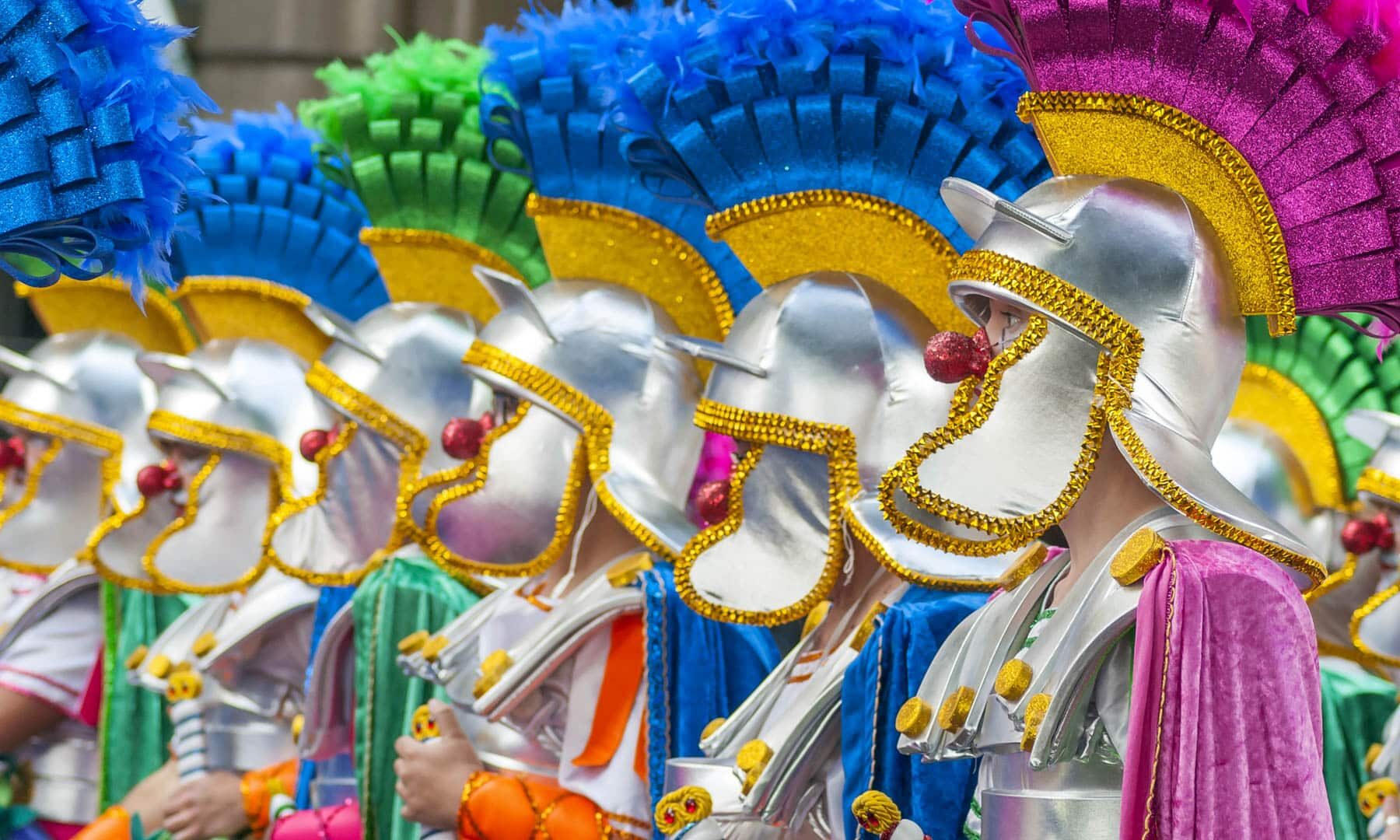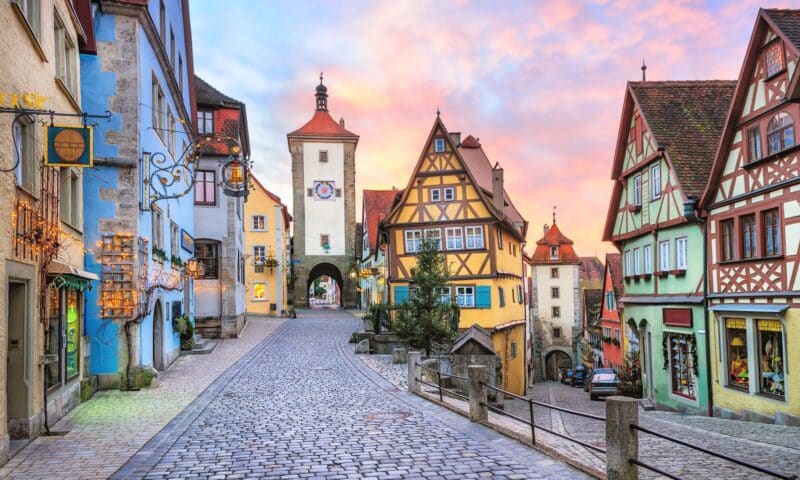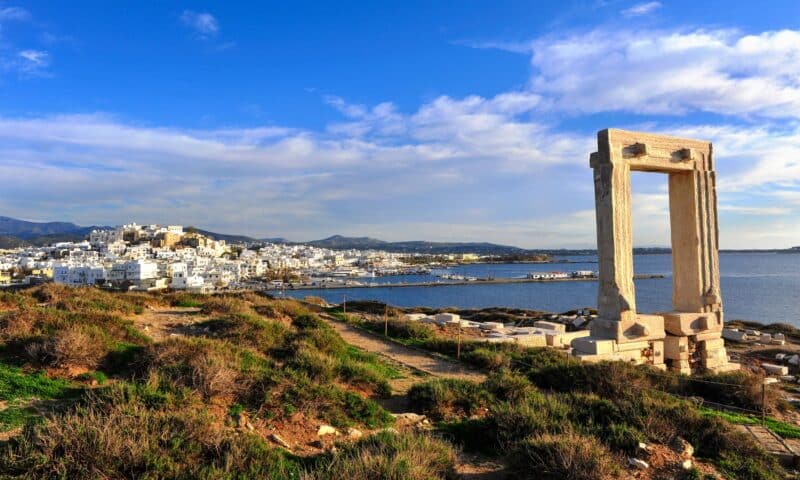With more than 870 festivals celebrated every year, Spain is one of the best places in Europe to party. From traditional romerías that honor the age-old heritage of tiny hamlets to larger-than-life carnivals that see entire cities transform into 24-hour parties, there’s always something interesting going on in this country – whenever you visit!
Joining in with local festivals is one of the best ways to immerse yourself in Spanish culture and experience the country from a whole new perspective. Whether you plan to have a messy food fight, learn centuries-old dances, witness solemn religious processions, or jump over a bonfire, taking part in local traditions is always great fun.
As there are so many festivals in Spain (an average of 2.3 per day, in fact!), it’s easy to feel overwhelmed when it comes to booking your vacation. To help make things easier for you, I’ve put together a list of the seven best festivals in Spain that you won’t find anywhere else!
Plan your trip to coincide with any of the following festivals, and you’re guaranteed to have an incredible time partying in this vibrant country.
Disclaimer: This post may contain affiliate links. If you make a purchase or booking through one of our links we may earn a small commission (don’t worry, it’s at no extra cost to you).
The 7 Best Festivals in Spain
1. Día de Los Reyes in Barcelona
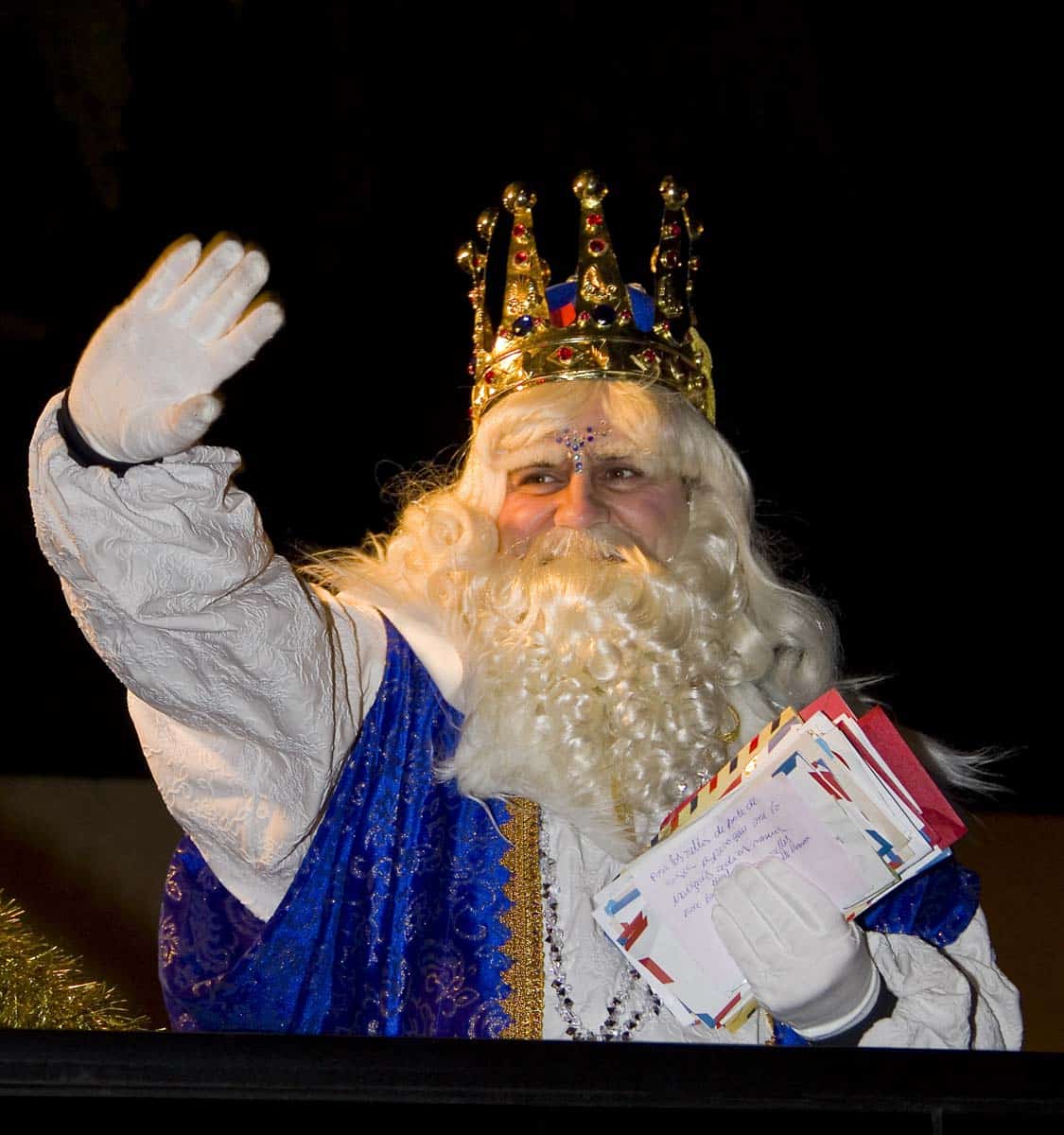
Dia de Los Reyes (also known as Kings’ Day or Epiphany) falls on January 6th, although most of the festivities take place the evening prior, on January 5th. The celebrations begin around 6 pm, when the three kings arrive and parade throughout the streets, handing out candy and gifts to little kids.
One of the most famous festivals in Spain, Día de Los Reyes is celebrated in towns throughout the country. But my favorite one takes place in Barcelona. Here the kings arrive by boat at the Moll de La Fusta port.
The mayor hands them a magic key that can open every door in the city, so the kings can leave presents for all the boys and girls. Even as an adult, it’s a really fun thing to watch!
This cute ceremony is followed by a fabulous parade with colorful floats ridden by popular children’s characters, postal workers who have delivered the children’s letters to the kings, and the kings themselves. Some floats are also ridden by Xumeters, who take pacifiers from the children who have outgrown them.
2. Carnival in Tenerife
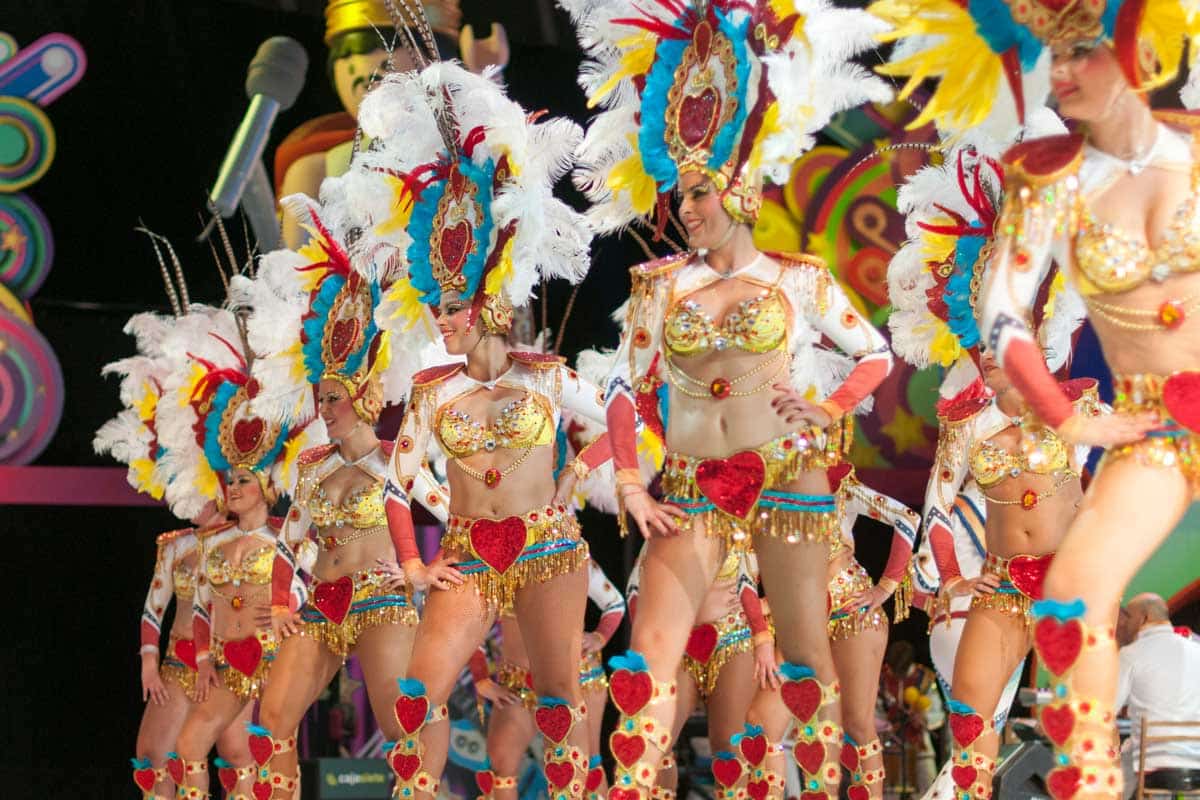
Said to be second only to the carnival in Rio de Janeiro in Brazil, the carnival in Santa Cruz de Tenerife is undoubtedly one of the most spectacular festivals in Spain. Tenerife is where I live, and this incredible event goes on for around one month with dynamic street parties, extravagant parades, sophisticated galas, theatrical performances, and live shows.
Coso Apoteosis del Carnaval is the main parade, which is definitely worth checking out, along with any of the street parties that happen every night in Plaza de España. The Entierro de la Sardina closing ceremony is also a must.
This unique parade sees hundreds of people dressed in black mourning the death of a papier-mâché sardine before it’s burned to ashes. It’s sure to be like nothing you’ve ever seen before!
Due to road closures and the number of people present, parking is practically impossible. Because of this, I recommend you take the bus to Santa Cruz.
If you’re going to watch the main parade, I suggest finding a spot along Avenida Francisco La Roche early, around noon. There are seats lining one side of the route, but these sell out months in advance. If you’ve got a foldable seat, it will definitely come in handy here!
3. Las Fallas in Valencia
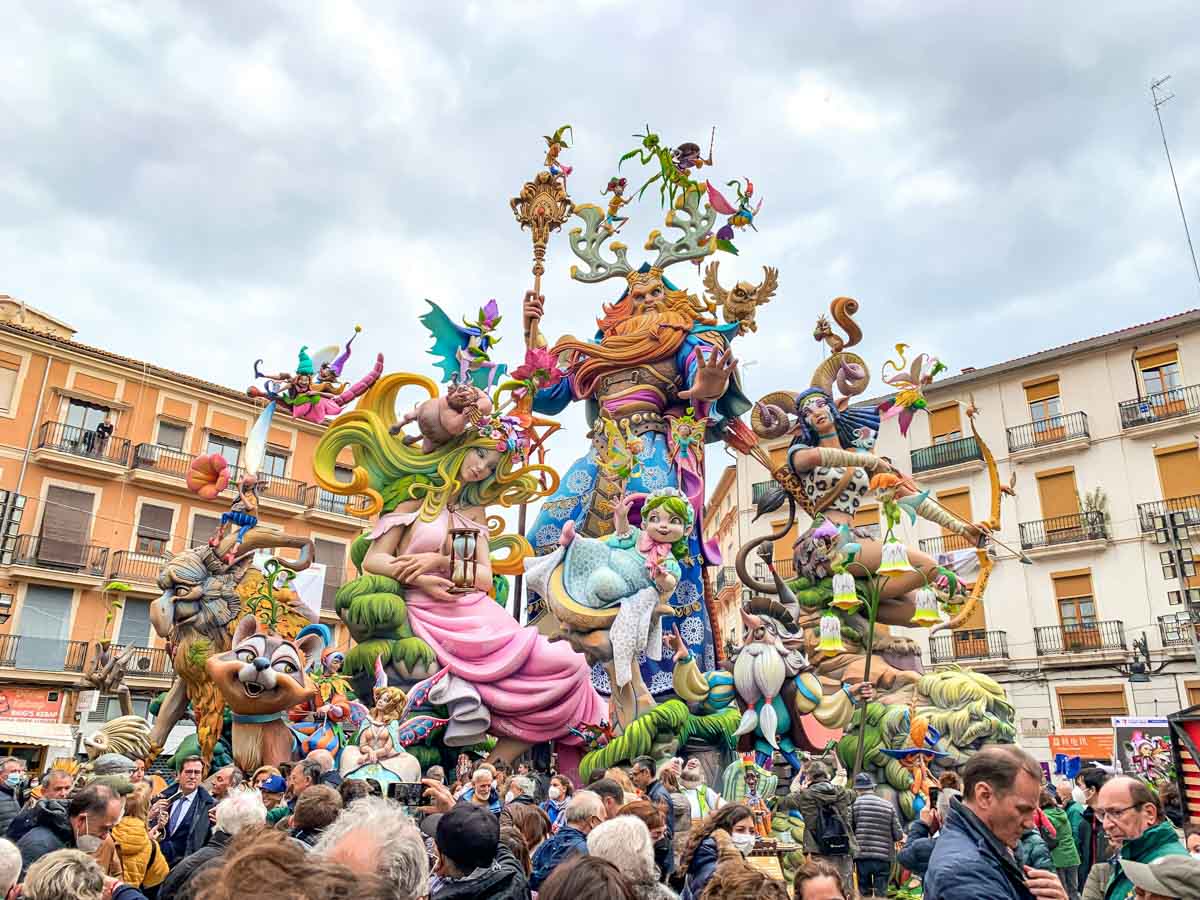
My favorite of all the famous festivals in Spain, Las Fallas is celebrated March 1st-19th in Valencia in honor of San José, the city’s patron saint. But unlike other festivals with a religious origin, Las Fallas involves building giant papier-mâché figures, parading them throughout the town for everyone to see, and then burning them in enormous bonfires.
Make plans to be at the Plaza del Ayuntamiento at 2 pm at least once during the festival. At this time, there’s a short ceremony followed by remarkably loud firecrackers, which can reach up to 120 decibels. It’s something you really only want to see once!
March 17th is one of the best days, when you can wander throughout the streets of the city, admiring all the giant sculptures. They’re so professional, intricate, and well-finished that you’ll struggle to believe they’re made from papier-mâché. I recommend getting tickets for the “Special Section” to see the most impressive sculptures.
4. Feria de Abril in Seville
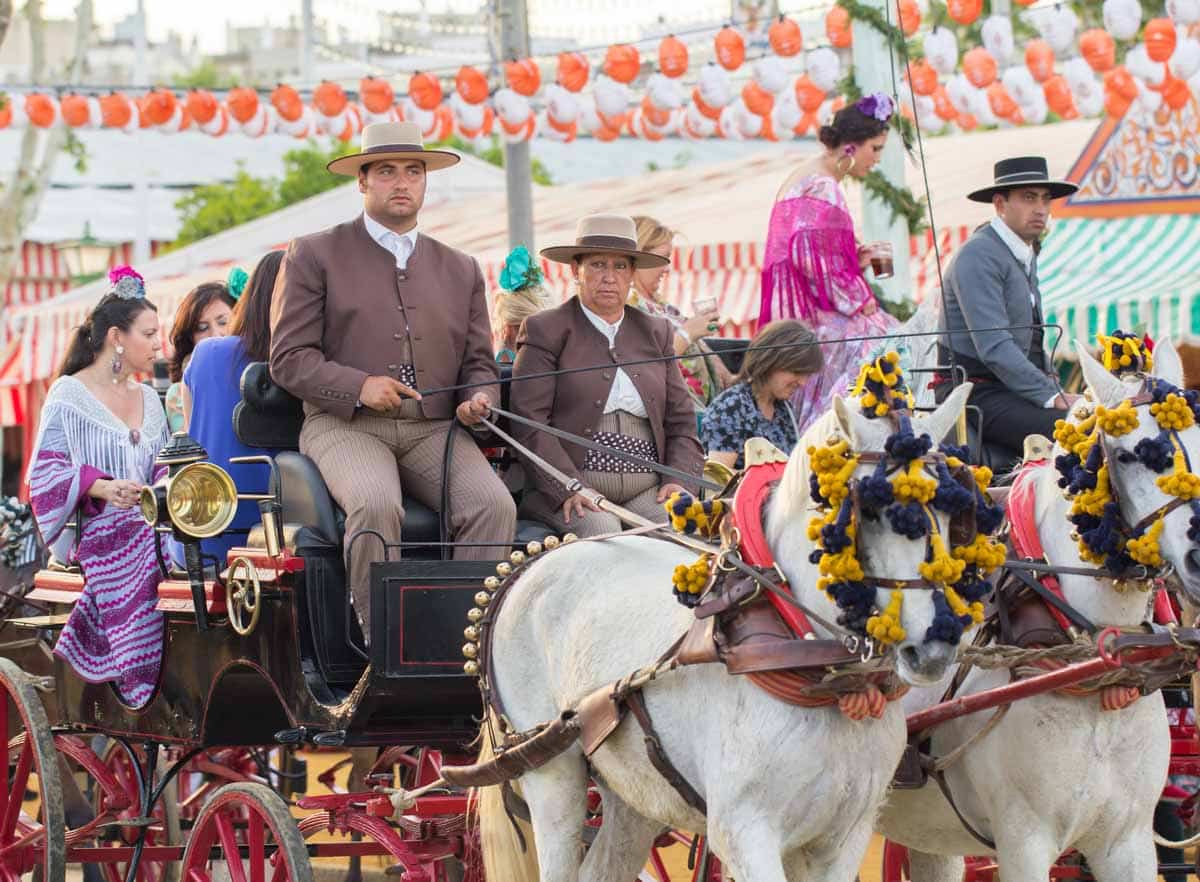
When it comes to traditional festivals in Spain, Seville’s Feria de Abril is tough to beat. This long-standing event dates back to 1847 when it was a simple livestock fair. But since then, it has grown into a week-long celebration of Andalucian culture.
Most of the action takes place at the Real de La Feria. This huge open space includes a fairground and more than 1,000 casteas, which you’ve absolutely got to visit. Casetas are striped tents where people gather to enjoy local sherry, jamón ibérico, and traditional music. Although most of the casetas are private, there are several municipal ones which you’re welcome to enter.
The biggest one is known as Caseta Turística, which is located at Pascual Marquez 225-229, close to the fairground. The Área de Fiestas Mayores at Costillares, 13 is usually pretty good, too.
Even if you don’t visit any of the casetas, just being in Real de la Feria is an amazing experience. Being surrounded by locals wearing traditional costumes, watching important people arrive by horse and carriage, listening to the passionate flamenco music, and seeing people spontaneously break into dance is great fun!
5. Noche de San Juan in Alicante
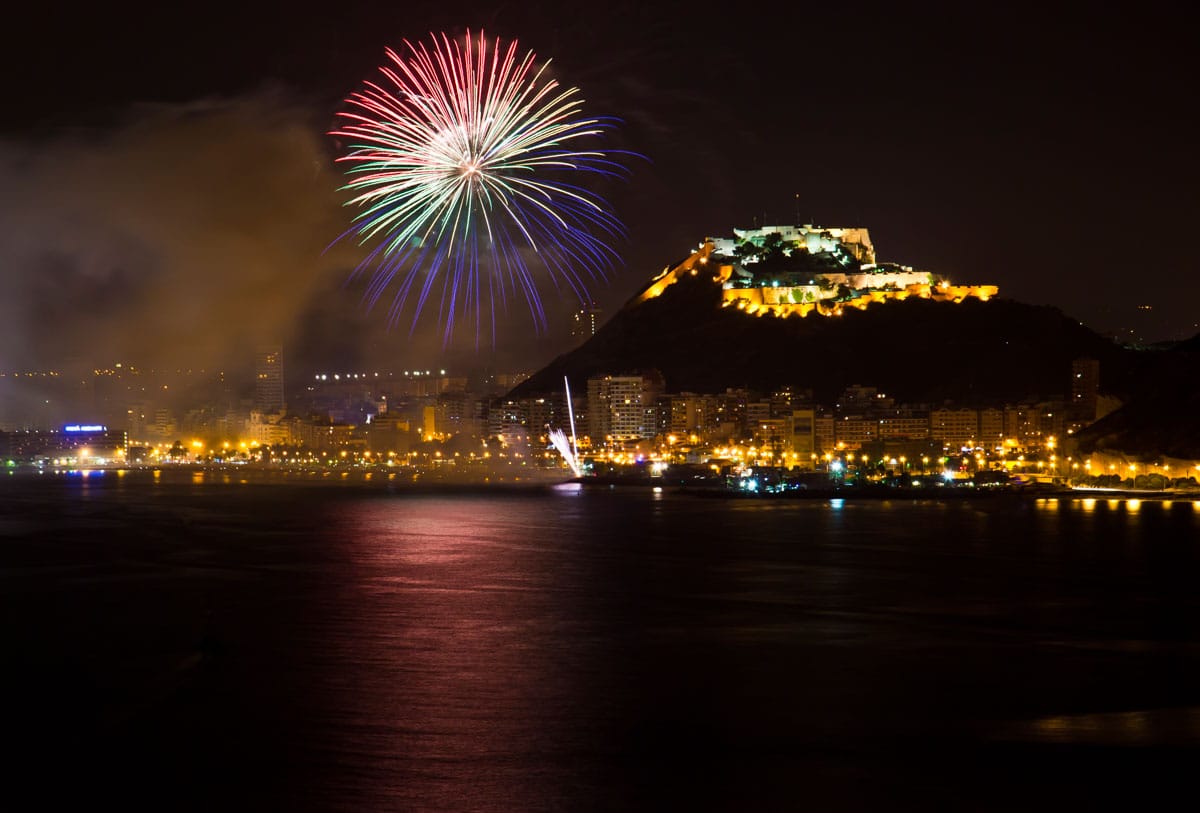
If you thought spending time at the beach was only something you do during the day, think again! Noche de San Juan is celebrated every year on June 23rd on beaches throughout Spain and its archipelago. While the festival is technically in honor of Saint John, most locals use it as an excuse to celebrate the beginning of summer.
You’ll find Noche de San Juan festivities anywhere there’s a beach, but nowhere does it quite like Alicante. This northern region of Spain celebrates for a whopping nine days, with the beaches of San Juan and Postiguet being the best for exciting events.
From June 20th-29th, these beaches become packed just before sunset, as locals gather to build huge bonfires and have parties. It’s common to see people jumping over the fires, as the act is said to burn your problems away and bring good luck. If you’re going to try this tradition for yourself, be careful!
6. La Batalla de Vino in La Rioja
La Rioja is where some of Spain’s most famous wine comes from. But instead of drinking it, every year on June 29th, locals use it to have a massive liquid battle instead! It may not be one of the most traditional festivals in Spain, but it’s definitely one of the most fun.
This one-of-a-kind event takes place in the usually sleepy village of Haro and is in honor of the local wine production. Follow the tradition by wearing a white T-shirt and a red scarf before heading to the outskirts of the city where the battle is held. Buckets, water bottles, and water guns are used to soak everyone in the vicinity with thousands of liters of red wine!
The wine battle comes to a close around noon, when everyone heads to Plaza de la Paz. Here the celebrations continue with food, wine (designed for drinking, not drenching this time!), music, and dancing.
7. La Tomatina in Valencia
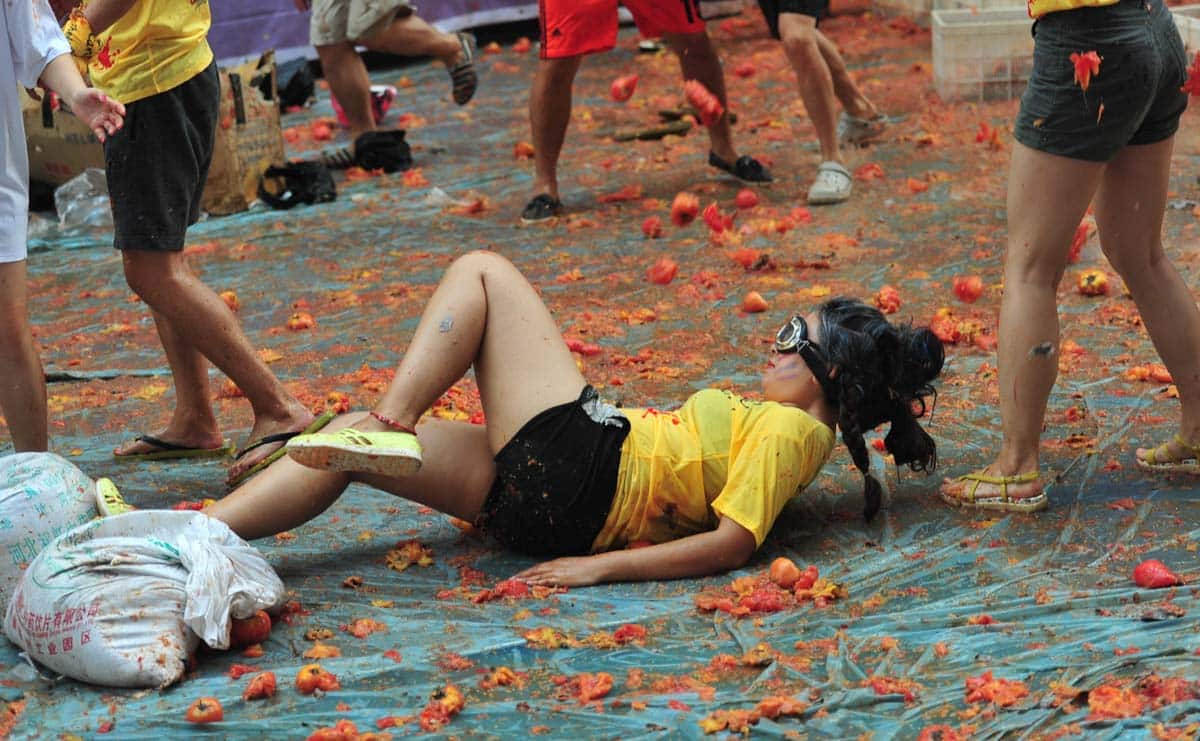
If you don’t mind getting a little messy, La Tomatina is one of the best festivals in Spain. Held on the last Wednesday of August every year, the world’s biggest food fight takes place in the tiny town of Buñol in Valencia. This peaceful town is normally home to just 9,000 people, but the population grows to more than 30,000 each year during La Tomatina!
At midday, a truck arrives at Plaza del Pueblo laden with around 150,000 tomatoes that are ready to be used as food fight weapons. The battle commences as soon as the first brave soul successfully climbs to the top of a 2-story greased-up wooden pole and grabs the leg of ham from the top. When this lofty task has been accomplished, water cannons fire into the streets, marking the start of the festival.
It’s almost impossible to get accommodation within Buñol during La Tomatina. Because of this, I suggest staying in Valencia and riding the bus or the train into the town. Head to the Buñol River after the food fight to wash up and get changed. There’s no way you’ll be able to ride on public transport if you’re covered in the remains of thousands of tomatoes!

